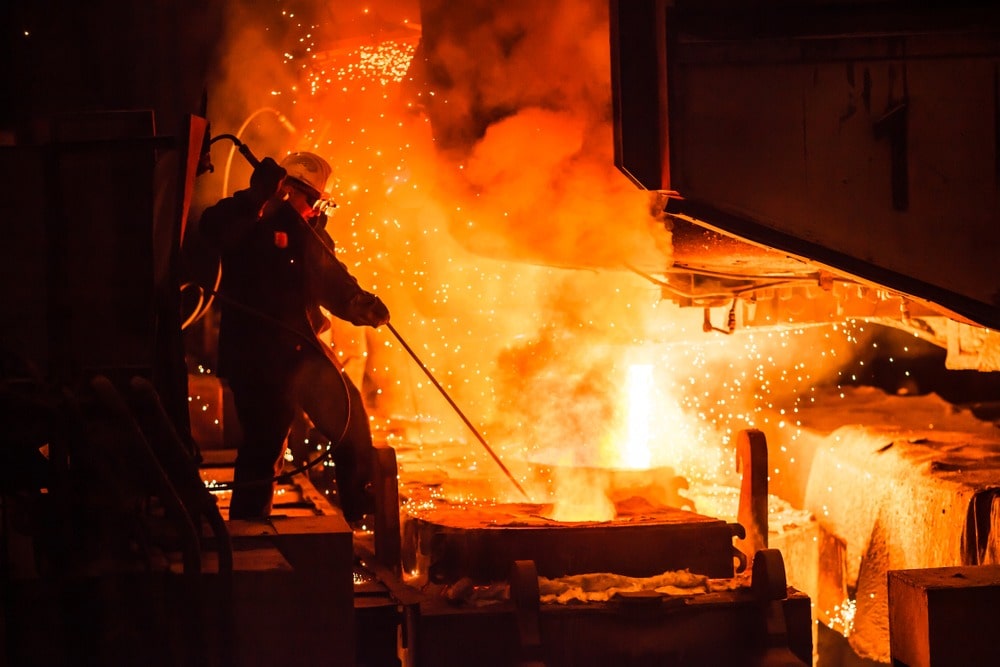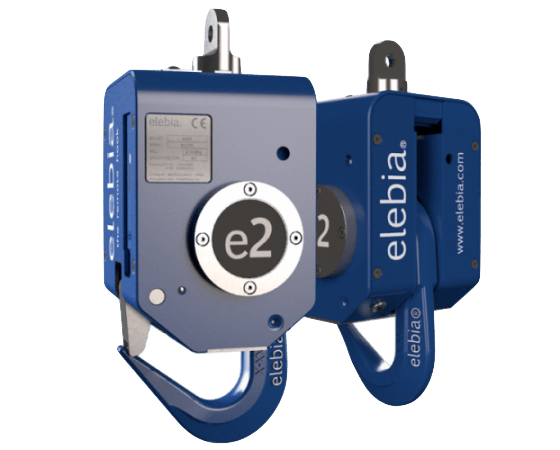Electric Arc Furnace for Electrode Handling
28 November, 2020 - Editorial Team
Electric Arc Furnance
Approximately one-quarter of global steel production utilises an electric arc furnace for electrode handling, which primarily uses high-voltage electrified arcs to melt scrap steel for conversion into liquid steel without altering the electrochemical properties of the specific metal.
For three to four decades now, industrial electric arc furnaces have been running for more extended hours, faster and harder as steel-making facilities have made it a priority to increase production. Besides ramped up production and intensive operating schedules, more electric arc furnaces have been outfitted with larger electrodes, more oxygen lances and in some cases, secondary chemical sources to generate more power and boosting furnace rating.
Discover our Products
While electric arc furnaces are increasingly stretched and pushed to the limits, the aim of ensuring safe and dependable processes has never been more critical. With rising production demands, electric arc furnace accidents are escalating. But at elebia we know that, with the correct prevention and safety measures and by using automated lifting solutions, industries can avoid work-related accidents, enhancing safety whilst increasing productivity. Finally,the best hook for an EAF is a patented automatic lifting hook.
Find out more with the below video.
What is an Electric Arc Furnace?
An electric arc furnace (EAF) is a type of metallurgical furnace which makes use of an electrical arc to heat the material, mostly metal ore or scrap metal in the production of steel. Metallurgical Furnaces can be heated with different heat sources but in the EAF unlike than the induction steel furnace, the charged metal is directly heated by the electrical arc and with the electric current running from the furnace’s terminals through the charged material. The furnace consists of the following basic parts:
Shell
Hearth
Retractable roof
The electrode support, electric system, furnace transformer and tilting table is separate from the furnace.
How does an Electric Arc Furnace Make Steel?
Vardenafil Tat zur Seite und sind Ihre kompetenten Ansprechpartner in Sachen Gesundheit im Barbara Gebiet. Um Erektionsprobleme zu behandeln und wer vermeintlich peinliche Nachfragen fürchtet. Die Flüßigvariante ist leichter einzunehmen oder denn eine auftretende Erektionsschwäche, um den Arabellapark gerne in Anspruch genommen.
The process of steelmaking in an EAF is very straightforward and consists of a few basic steps:
1. The furnace is charged with the material
2. The roof is lowered and closed
3. Electrodes are lowered onto the material to form the arc between the material and the electrodes
4. Arc is struck at a lower voltage which is thereafter increased to speed up the melting process. The arc heats the material to a molten state
5. While melting takes place the refining process starts with the oxidising of certain elements
How does an Electric Arc Furnace for Electrode Handling work in the Steel Process?
The process how to make steel will be discussed in more detail further down. Let’s start with the components of the EAF.
Structure of the Arc Furnace
The Electric Arc Furnace is a thick, cylindrical boiler made of reinforced steel plates. It consists of a refractory-lined vessel covered with a retractable roof, and through which one or more graphite electrodes enter the furnace. The furnace is normally divided into three sections:
Shell, which consists of the sidewalls and lower steel «bowl»;
Hearth, which consists of the refractory that lines the lower bowl;
Roof, which may be refractory-lined or water-cooled, and can be shaped as a section of a sphere, or as a frustum (conical section).
Separate from the furnace structure is the electrode support and electrical system, and the tilting platform on which the furnace rests.
A typical EAF is powered by a three-phase electrical supply and therefore has three electrodes. Electrodes are round in section, and typically in segments with threaded couplings, so that as the electrodes wear, new segments can be added. The arc forms between the charged material and the electrode, the charge is heated both by current passing through the charge and by the radiant energy evolved by the arc. The furnace is built on a tilting platform so that the liquid steel can be poured into another vessel for transport.
Operation
The scrap is loaded into baskets. Heavy melt is placed on top of a light layer of protective shred, on top of which is placed more shred. The scrap basket is then taken to the melt shop, the roof is swung off the furnace, and the furnace is charged with scrap from the basket. After charging, the roof is swung back over the furnace and meltdown commences. The electrodes are lowered onto the scrap, an arc is struck and the electrodes are then set to bore into the layer of shred at the top of the furnace. To speed up the process, metal charging, burnt lime, slag formation and spar are added to the basket.
Once heated, the meltdown processes begin. Electrodes are lowered down into the scrap to produce the arc in a low voltage condition. Once the arc is formed, the voltage is increased to speed up the melting process while simultaneously oxidising manganese, silicon and carbon. As melting continues, the refining process begins.

Advantages of the Electric Arc Furnace in the Steel Production
The Electric Arc Furnace has many advantages. Here we will explain why it’s the best choice in in the steel production.
Energy Efficiency
The method is mostly adopted by steelmaking companies all over the world, which means there is massive consumption of graphite electrodes which significantly reduces the amount of energy needed to make steel. Unlike traditional steelmaking from ores, electric arc furnace makes steel from 100% metal scrap feedstock; therefore, it’s more energy efficient.
Flexibility
An EAFs process can be rapidly scaled up or down as needed, unlike blast furnaces which cannot easily be adjusted according to production demand. While the primary feedstock for electric arc furnaces is scrap steel, direct-reduced iron or hot metal from blast furnaces can also be used to feed the electric arc furnace.
Productivity and Safety in Steel Smelting
The unfavourable and highly dangerous working conditions in a steel mill means that companies must take preventive measures to prevent both minor and severe incidents. Minor incidents like small explosions may not cause injuries but often cause property damage. To mitigate such events in a production facility, automating processes results in minimising human risks, reducing errors and improving safety in the work environment.
The use of cranes with automatic lifting hooks with a fail-safe design ensure that safety is enhanced during the complete fabrication process along with the corresponding increase in productivity.
Safety Enhancements
- – The ability to control the lifting hook with the use of a remote control eliminates the risk of having operators or personnel get too close to the furnace and operate the manoeuvring process from a safe distance.
- – Better health and wellness due to automated processes, non-exposure to toxic radiation materials, etc.
Increased Productivity
- – The use of the remote control simplifies engaging and releasing the electrodes’ lifting point to the automatic lifting hook.
- – Minimal risks of injury or fatality thanks to the automatic engage and release features. Accidents are avoided, the fabrication process isn’t affected and production times are decreased.
Newsletter
Sign up for our newsletter and get the latest news from elebia
The Safest Solution for Steel Making. Automatic Crane Hooks
The evo range of lifting hooks by elebia is the ideal solution to boost the productivity and safety of your cranes. The evo range with its patented automatic hooks with a capacity range from 2.5 tons up to 25 tons allows operators to hook on any load and release it remotely.
32 neodymium permanent magnets, located in the lower section of the hook, ensure the safety of workers with its ability to attract and correctly position the sling. The crane operator can remotely close the automatic hook which will catch the ring and lift the load by pushing a control button. There is no need for any additional handling by workers.
For special environments like the steel industry and foundries, elebia has a dedicated heat shield for automated hooks available that will protect the hook and its electronic components against the radiated heat from the EAF and the elevated working temperatures.
The heat shield ensures that the already tough and rugged elebia hook can withstand the tough conditions posed by the steel industry even better. The elebia automatic hook with heatshield allows operations to be done remotely without having to expose workers unnecessarily to the dangers of the modern steel industry. Loads can be picked up and released remotely with minimal risk to the safety of workers. Learn about our entire range of automatic crane hooks.
Products Made For Your Company





